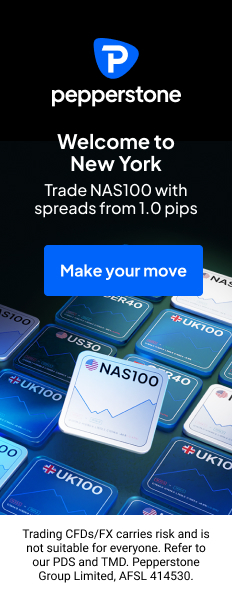
Who would have guessed ten years ago that traders and gamers would end up speaking the same language? Yet in 2025, the gap between financial markets, digital assets, and online gaming has almost disappeared. Blockchain casinos, tokenised rewards, and live data dashboards are proof that what once looked like separate industries are now moving in step.
Speculation as Entertainment, Entertainment as Speculation
Financial markets have always carried a speculative element. The rise of online gaming has amplified this, creating products and platforms that feel familiar to traders. Players track odds the way investors follow price charts. Casual bettors now talk about “value” in much the same way portfolio managers do.
For market participants, this cultural crossover is significant. It suggests that risk appetite, once the preserve of investors, is now mainstreamed through gaming experiences. That has implications for how younger generations approach both entertainment and finance.
Crypto as the Common Denominator
The biggest driver of this crossover is cryptocurrency. Digital assets have made payments faster, borders less relevant, and ownership more transparent. For gaming platforms, they’ve opened new markets. For financial markets, they’ve created new asset classes.
In practice, crypto bridges the two worlds in several ways:
-
Payments – Players use tokens to deposit and withdraw instantly, while traders exchange the same assets on exchanges.
-
Trust – Blockchain provides transparency for gaming outcomes and trade settlement alike.
-
Volatility – Both sectors deal with the ups and downs of token prices, a risk and opportunity in equal measure.
-
Global Reach – Crypto participation cuts across geographies, drawing in audiences from regions underserved by traditional finance.
It’s this shared infrastructure that explains why financial and gaming innovations increasingly move in parallel.
The Rise of Bitcoin Casinos
Crypto adoption in gaming is no longer theoretical; it has become mainstream. Platforms offering cryptocurrency payments have grown rapidly, particularly those catering to English-speaking markets. For example, a Bitcoin casino UK allows players to deposit and wager in Bitcoin directly, combining the appeal of digital assets with traditional gaming experiences.
For markets, the growth of such platforms signals more than just entertainment. It shows how consumer demand for crypto utility is growing. Where once digital assets were held purely for speculation, they’re now part of everyday use cases. That matters for adoption curves and for investor confidence in blockchain ecosystems.
Sports as the Proving Ground
Sports betting has become one of the most visible intersections of finance and play. Odds move like markets, events drive volatility, and data is analysed with a trader’s eye. Platforms such as Sportsbet exemplify this trend, combining global sports coverage with digital engagement tools that echo financial dashboards.
From a financial perspective, this is important for two reasons:
-
It normalises risk-based decision-making for a wide audience.
-
It drives volume and liquidity in digital transactions, particularly when linked with crypto wallets.
The sports world is effectively a testing ground for how financialised entertainment products can scale to millions of users.
Data, Dashboards, and Decision-Making
Traders are familiar with candlestick charts, moving averages, and dashboards that provide live data. Increasingly, gamers are too. Online platforms now provide real-time stats, histories, and predictive analytics to help users make choices.
This convergence isn’t accidental. Both markets rely on:
-
Information Asymmetry – Knowing more, or acting faster, creates an edge.
-
Real-Time Data – Delays erode trust, whether in trading or gaming.
-
Interface Design – Clean dashboards keep users engaged and returning.
-
Behavioural Incentives – Nudges, alerts, and rewards shape decision-making and keep participants active.
-
Community Features – Social comparisons, leaderboards, and forums build loyalty and amplify engagement.
The skills cross over. Traders comfortable with probability theory often take to betting quickly. Gamers used to leaderboards and performance tracking may find trading dashboards less intimidating than previous generations did.
Regulatory Parallels
Another area of overlap is regulation. Both sectors have faced questions around consumer protection, transparency, and fairness.
Financial markets have long been tightly regulated, with disclosure rules and capital requirements. Gaming is catching up, with stricter licensing, AML (anti-money laundering) obligations, and responsible play measures.
For businesses operating in both spaces, compliance is increasingly complex. But the parallels are striking: both must build trust to grow, and both rely on regulators to set guardrails that allow innovation without exploitation.
Tokenisation and New Asset Classes
Looking ahead, tokenisation may be the biggest area where markets and gaming intersect. Already, loyalty points, in-game items, and betting credits are being tokenised on blockchains. That opens the possibility of secondary markets for gaming-related assets, much like financial derivatives.
For investors, this could mean new forms of exposure. For gamers, it could mean that time and money spent in-platform retain transferable value. In both cases, the financialisation of digital experience deepens.
Risks Investors Should Note
While the convergence is exciting, it’s not without risk. Investors and market participants watching the gaming-crypto crossover should keep a few things in mind:
-
Volatility Remains High – Token prices can swing dramatically, impacting both deposits and profits.
-
Regulation Is Fragmented – Different jurisdictions take very different stances, creating uncertainty.
-
Consumer Protection Issues – The blending of play and finance raises questions about responsible use.
-
Operational Resilience – Platforms handling both gaming and financial flows face high demands for security and uptime.
-
Reputation Risk – Association with gaming may deter more conservative investors or partners.
These risks don’t negate the opportunity, but they highlight the need for careful analysis.
When Finance and Play Become One
For decades, markets and gaming were seen as separate universes. One was about capital and investment; the other about leisure and entertainment. In 2025, that separation no longer holds.
From blockchain payments to tokenised assets, from dashboards to regulation, the overlap is undeniable. A new generation is growing up fluent in both worlds: comfortable with probability, risk, and digital ownership.
For investors, that means opportunity. For platforms, it means responsibility. And for users, it signals a future where markets and play aren’t just connected, they’re part of the same digital ecosystem.
FAQs
Why are financial markets and gaming converging now?
Because the tools and technologies underpinning both, especially blockchain and digital wallets, are the same. Users move fluidly between them.
Is crypto really widely used in gaming?
Yes. While adoption varies by region, crypto deposits and withdrawals are now common in online casinos and betting platforms.
Do regulators treat gaming tokens like securities?
Not yet, in most cases. But as tokenisation grows, regulators are paying closer attention to whether these assets behave like financial products.
What lessons do investors take from gaming platforms?
That user engagement matters as much as financial product design. Just like traders, players stick with platforms that feel transparent, fast, and rewarding.
Could traditional financial firms learn from gaming platforms?
Yes. Gaming platforms excel at user engagement, something financial services have often struggled with. By adopting clearer interfaces, progress tracking, and more transparent reward systems, traditional firms could make their products feel more accessible and engaging without losing professionalism.
Could tokenised gaming assets be traded on secondary markets?
Potentially. That’s one of the longer-term opportunities, though it depends on how regulators classify them.
Is the overlap a positive trend for crypto adoption?
Broadly yes. The more use cases exist, from trading to gaming, the more normalised crypto becomes.


 Hot Features
Hot Features













